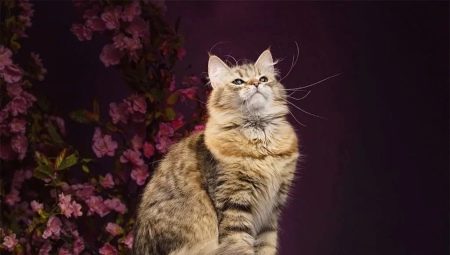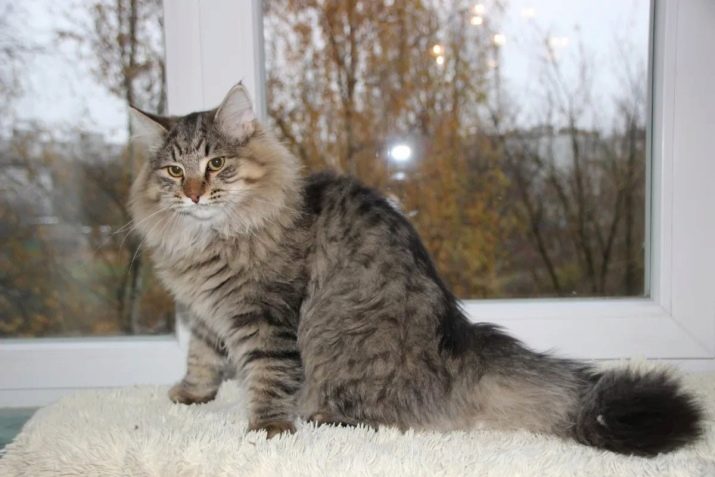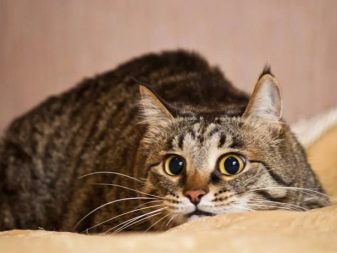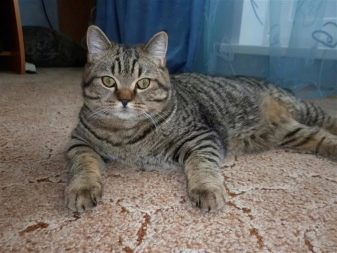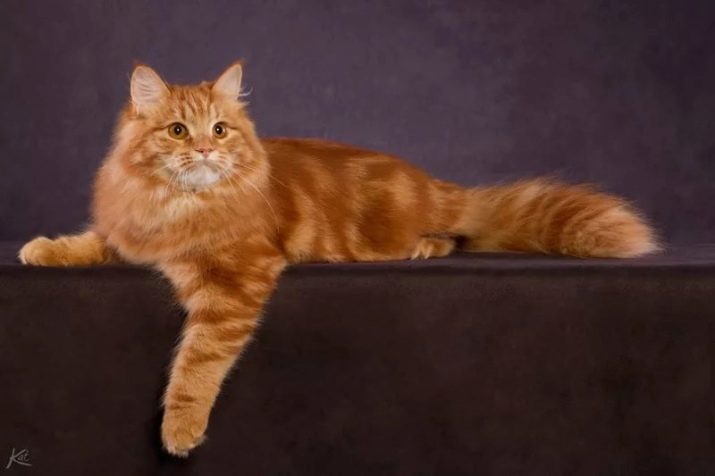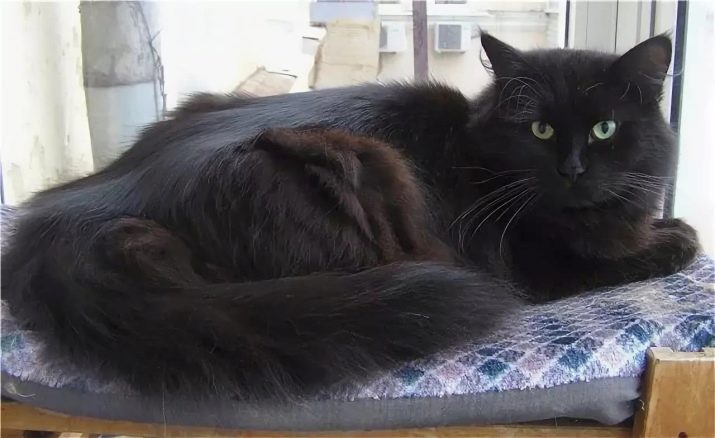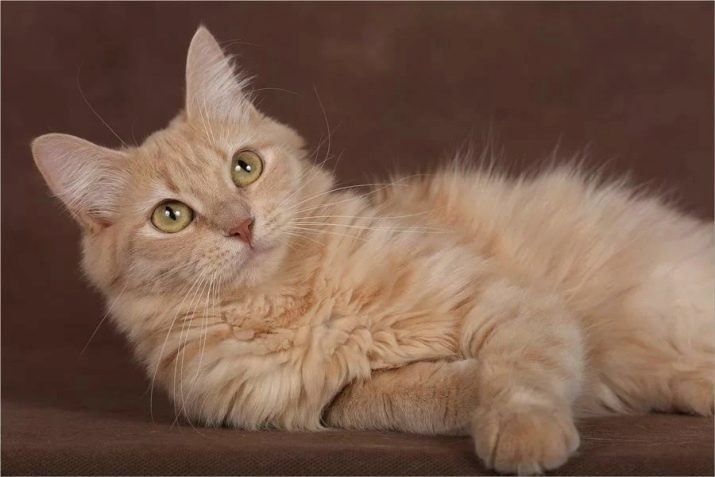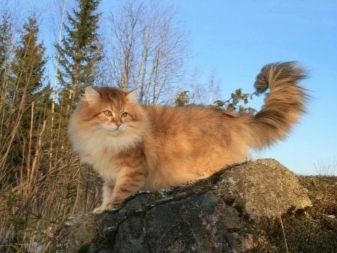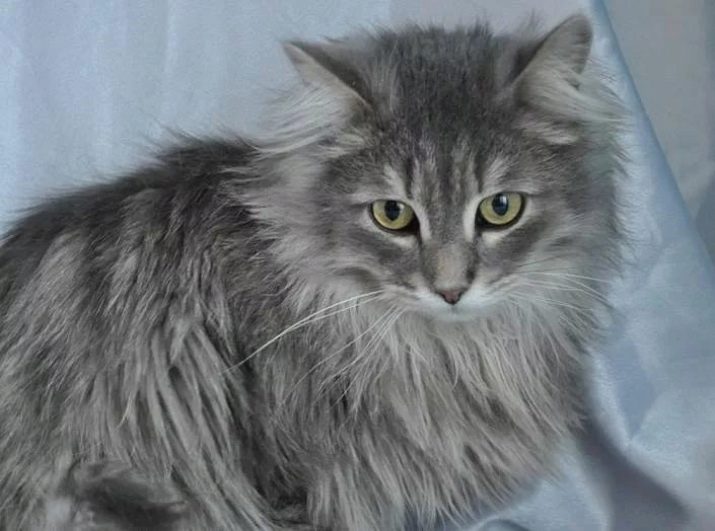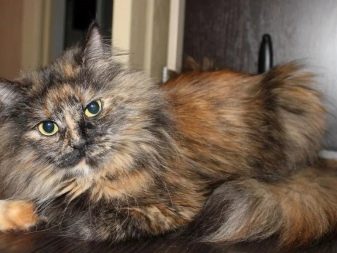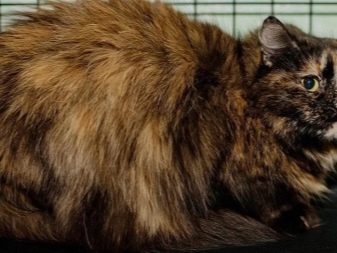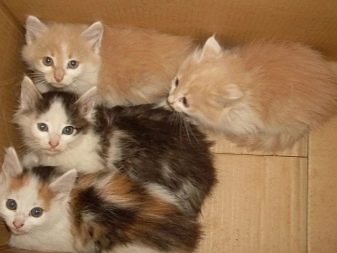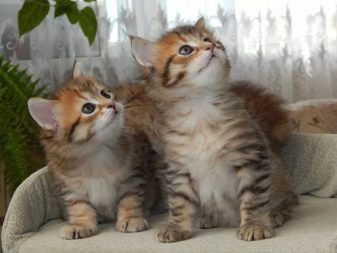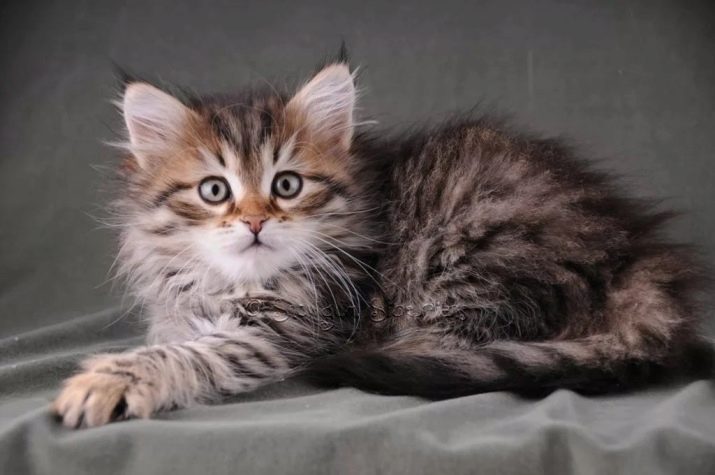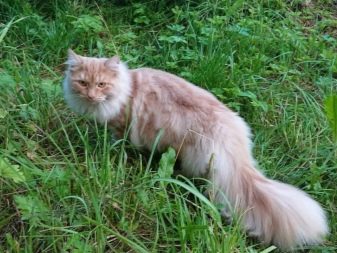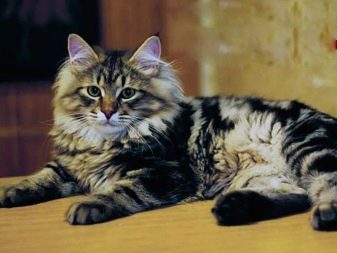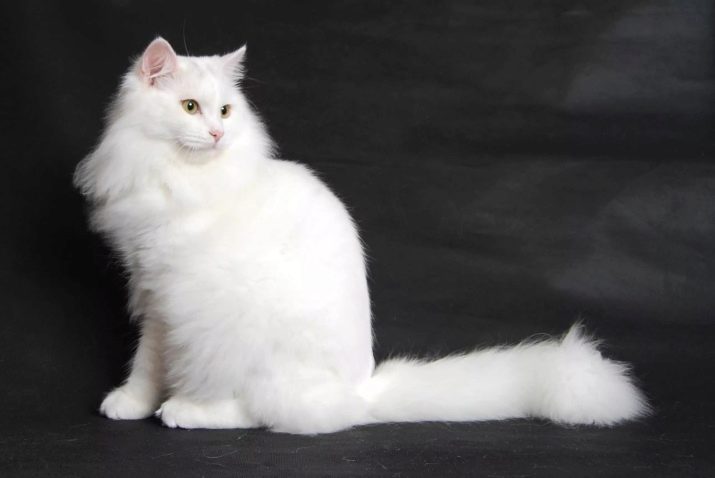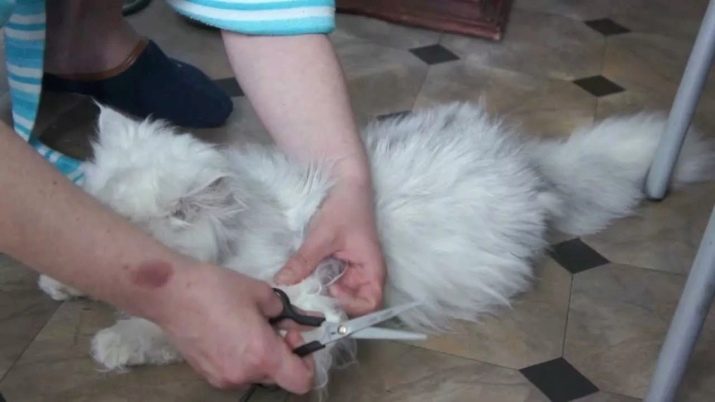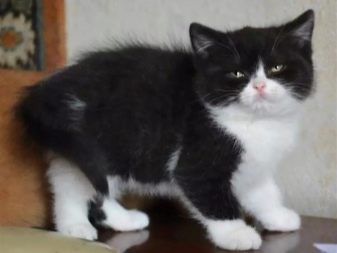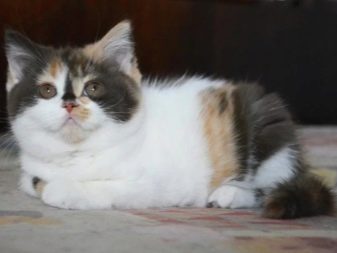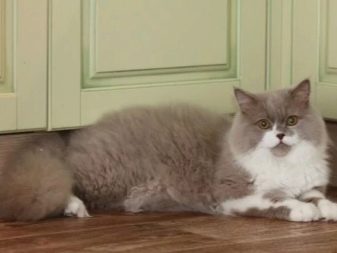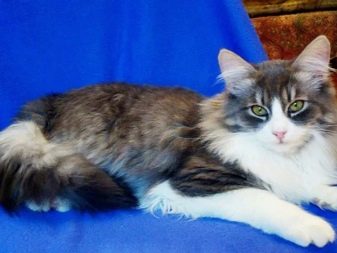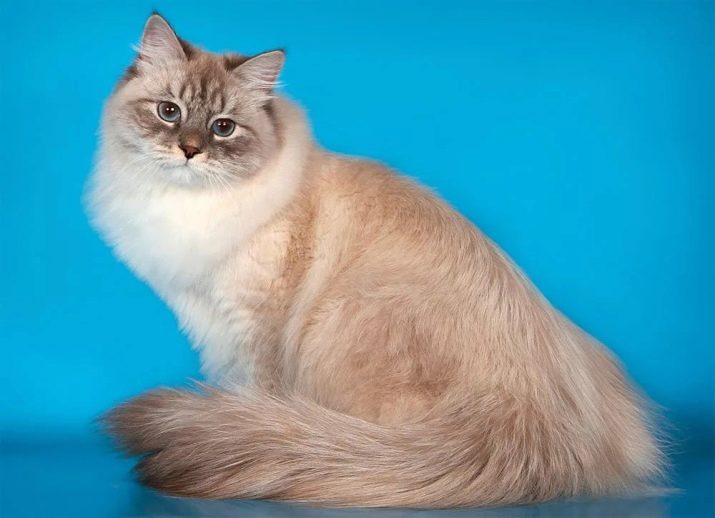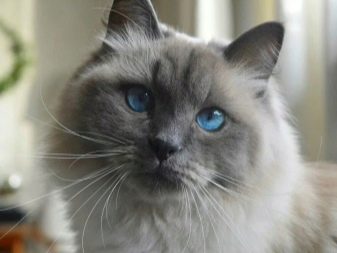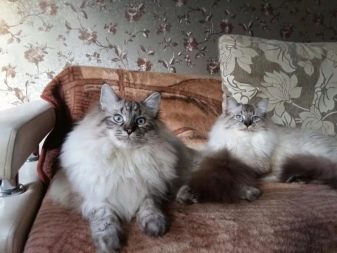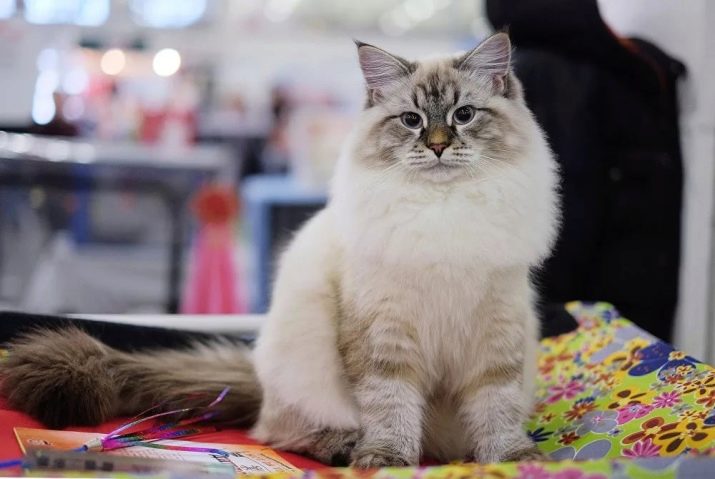Siberian cats - a beautiful native breed, which is very popular among Russians. This is not surprising - animals are renowned for excellent health, endurance, and at the same time they are very contact and agreeable, with well-developed intellect. But the main feature of the "Siberians" - elegant wool, the color of which can vary from snow white to black.
Features
Siberian cat breed was formed almost naturally. Representatives of this breed are distinguished by chic fur, huge expressive eyes, rather large body sizes and a wide, bushy tail. It can be called a forest cat, fearless and courageous. Nevertheless, she has a kind and accommodating character.
Siberian cats are much larger than females. Body weight depends on gender - females weigh 4–5 kg on average, and males 6–8, although there are cats whose weight reaches 12–14 kg.
Today, there are more than 200 options for coloring Siberian cats, although not all of them are recognized as the standard. There are several main groups: uniform, tortoise, smoky colors, two-tone, colorpoint and tabby.
The difference in the palette is so striking that Siberian cats are often confused with other breeds. To avoid mistakes, it is worth remembering that, regardless of the color of the coat, constitutional features remain the same. Animals are distinguished by powerful bones, strong paws, large head, resembling a blunted triangle.
By the way, Siberian cats and cats can be short-haired. This subspecies has a thick, "plush" fur coat, and the colors are as diverse as their furry relatives.
Recognized colors
All members of this breed differ from each other only in color. Moreover, the variety of colors of this cat is huge. The breed standard allows all colors, excluding only chocolate and purple. It is possible to divide all varieties into several groups:
- solid uniform;
- two-color (bicolor);
- tortoiseshell;
- colorpoint;
- smoky;
- tabby
Representatives of various shades and colors can also be present in these groups. Let's get acquainted in more detail with the types of colors of this beautiful cat.
Solid - the so-called uniform monochromatic color of Siberian cats. Its feature is the complete absence of stripes, scorch marks and spots; each section of the wool is dyed evenly from the base to the tip of the hair. Within this group there are several color subgroups.
Red
We used to call this color red, but its official name according to the standard is red. The Siberian cat of this color is luxurious and unique: an impressive coat of fiery color and large amber eyes. In contrast to the usual "ginger" cats, coat color in pedigree cats is uniform, without inclusions, any pattern, patterns and spots.
Large bright red cat with a luxurious fur coat - stunning beauty purring. His nose and pads on the paws are red or pink.
Interestingly, the gene O (orange), which is responsible for the red color, is tied to the sex of the animal. As a rule, males are monotonous - red or black, but for females there is a tortoise color that includes both of these colors.
Blue
Siberian cats of this color are very popular among lovers of the breed. The shade of their wool is quite characteristic - noble ash-gray. Fluffy, voluminous coat of this color looks very elegant and beautifully shimmers in the sun.In this case there should not be a clearly defined pattern according to the standard, the effect is achieved due to a smooth, almost imperceptible transition of several shades of gray.
But such a cat is appreciated not only because of external beauty. It is believed that they - the most flexible and contact. But at the same time, they are quite independent and completely unobtrusive, so they will not annoy the owner with increased attention.
The black
If all wool is dyed black, it is solid black. Black Siberian cat is black everywhere. Wool, paw pads, nose tip - all of the same resin color. According to the standard, not the slightest deviation from this rule is allowed.. Saturated black, without spots of other tones, without gray undercoat and brown shade is appreciated.
In kittens, wool is usually tinged with a gray or brown color, but then changes and becomes completely black. In accordance with the standard, it must be completely black, including fingers and nose.
The most common coloring in Russia is tiger black. Black Siberians are often confused with representatives of other breeds, as they do not suggest the possibility of this variant of color in a Siberian cat.
People who are poorly versed in rocks are genuinely surprised when they find out that this big, fluffy beast that is blacker than black itself is a purebred Siberian aborigine.
Cream
This Siberian wool has a delicate, pastel tone, medium cream or cream shades. Each hair is exactly painted over the entire length. His nose, like the pads on the paws, have a pink color.
Gold
The main feature of the golden color is apricot color of the hair. Depending on the length of this part relative to the length of the entire hair, gold can be shaded and chinchilla. Golden Siberian eyes are usually green.
Smoky
The shimmering hair of smoky Siberian cats when combined with light and clear eyes makes them very attractive. The hair of this cat's hair has a smoky tint only at the tip, and at the skin itself gradually turns into completely white. This gives a special charm to the cat.
Tortoiseshell
The tortoiseshell color is distinguished by a mosaic combination of multi-colored spots. There should be spots of red and cream shades, not forming a pattern. A proportional ratio of shades and harmony between them is a requirement of the breed standard.
Kittens
The color of the kitten always depends on the color of the parents, regardless of the color of other relatives. Maternal color is usually obtained from the kitten-boy. The little kitty gets a mix of parent colors.
For example, from a black cat and a black or blue cat kittens of both sexes can be both black and blue. When mom tortoiseshell and black daddy kids are possible: black, blue, red and tortoise, blue-cream and cream. The same kittens will appear in a pair of tortoiseshell cats and blue cats. If you want to get kittens red or cream, then mom should be of such a shade, and dad needs red. When crossing a tortoiseshell cat and a cream cat, babies can be born in eight different colors.
There is a special table for calculating the color of kittens, depending on the color of the parents.
Figured Cats
In the patterned colors of the representatives of this breed of hair is colored zones. Black and yellow alternate 3-4 times. This type of color is called wild.
Tabby
Under this incomprehensible word lies the usual color of the Siberian cat - striped or stained. This is the most familiar color for all representatives of this breed. Light brownish wool with a gray tint depending on the lighting may appear greenish with a golden tint. She is considered a wild, natural coloration of Siberians. This tone helps predators to hide during the hunt.
Marble
Marble tabby is different from other types of pattern coloring.Two stripes, passing vertically along the head, on the shoulders form a kind of butterfly wings and pass into spirals in the region of the sides. Two narrow and one wider strip run down the back and sides. The pattern is usually symmetrical. Often the tone alternates between black and gold.
Striped
In the tabby color striped along the whole ridge there is an alternation of light and dark stripes of approximately the same width.
White color and combinations with it
This option is incredibly spectacular.
White
No cat stains or impurities of other colors. This, by the way, is often misleading for some people. A boiled white cat of this breed, without the slightest hint of the presence of other colors, can be mistaken for a breed called the Turkish Angora.
Sometimes there are animals with sky-blue eyes. The sight is incredibly beautiful, but, alas, is a sure recessive sign of hereditary deafness in an animal. But heterochromia - a different color of the iris - does not entail problems with hearing, so the cats with different eyes are absolutely healthy.
The tip of the nose and the paw pads of snow-white "Siberians" are pale pink, the hair is long and thick, requiring regular brushing, although its structure is more rigid and not prone to tangles.
Bicolor
Bicolor - a combination of two colors in the coloring of the animal. The main color can be tortoise or monochromatic. White, on the other hand, takes from the third part to half the surface of a cat's coat, with clear boundaries of colors. There may be very interesting pictures in this combination. For example, the white tip of the tail with white socks on the legs, as well as the white bottom and black top.
Acromelanic colors
One of the representatives of this color is the Neva Masquerade. It has a different color intensity in different parts of the body. The darker are the legs, ears, tail and muzzle. Everything else is ivory or light beige. Name received at the place of initial breeding, which is St. Petersburg.
The eyes are usually blue or blue in these cats.
And also to acromelanic colors are points. They differ from Neva in shades of darkened places. Shades can be completely different: from red to brown, and from pastel to black.
Regardless of coat color, the Siberian cat is a wonderful pet, which will become a full member of the family and will give many pleasant moments to its owner. They live for a long time - up to 20 years, do not require undue care, they are highly trained, so owners usually do not have problems with toilet training. By the way, the wool of “Siberians” is considered hypoallergenic, therefore the presence of a cat or a cat in the house will not entail any negative consequences for allergy sufferers.
The variety of colors of modern Siberian beauties and beauties is the merit of breeders.
In accordance with modern standards, even the most exotic colors are permissible in this breed, and the eye color is also diverse in relation to the color. In other breeds such liberties are absolutely unacceptable.
On the breeds of Siberian cats, see the following video.
